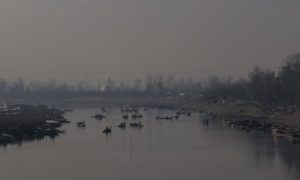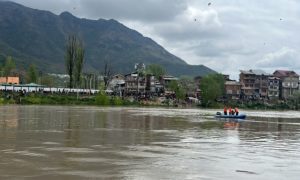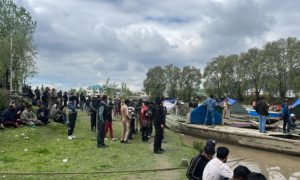It is important that we understand the message and take corrective steps before history repeats itself again.
The discourse around town during the days of 2014 floods seemed restricted to two subjects: a personal account of how the people managed to survive the fury of the flood and a discussion on what caused the flood.
Many described the flood as a natural calamity, an act of God that they could not do anything about. Quite a few, on the other hand, had a different opinion.
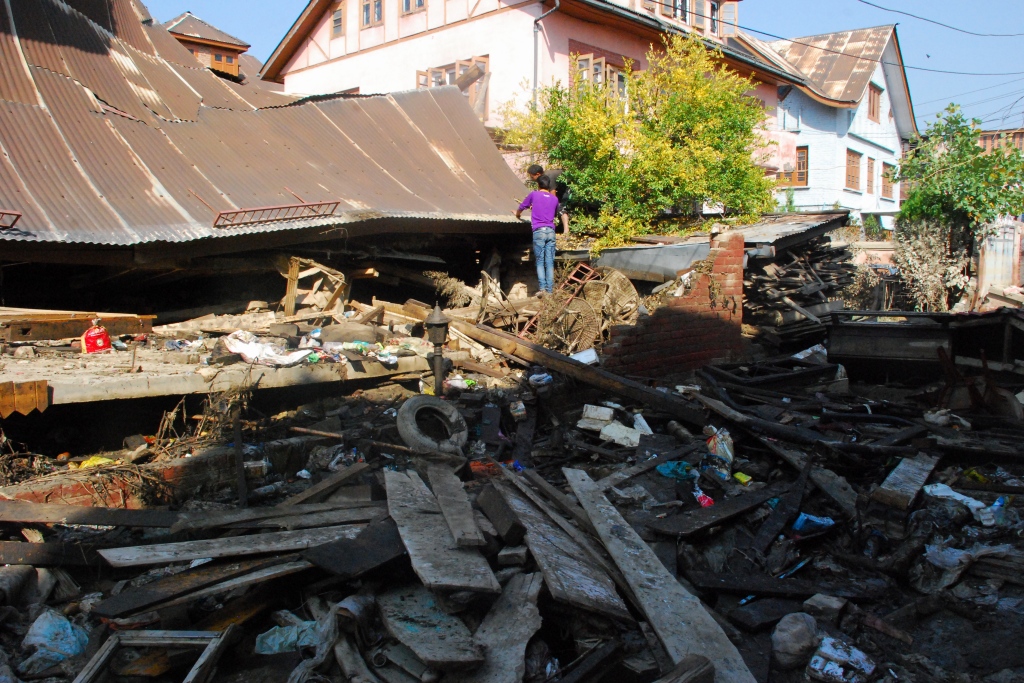
A collapsed house at Balgarden. [FPK Photo/Aamir Nowshahri.]
From what I gathered on the streets, a significant proportion of the population believed that the catastrophic flood of 2014 was not just a natural calamity but had a man-made aspect to it as well.
Sometimes it is important to look back at the past in order to have a better understanding of what is going on in the present and what might happen in the future.
History, after all, does have a tendency to repeat itself.

A boat to be used for rescue operations being transported at Qamarwari Chowk. [FPK Photo/Aamir Nowshahri.]
Taking a cursory look at history, it is interesting to note that Kashmir witnessed its earliest recorded flood as far back as 2082-2041 BC.
In the recent past, Kashmir witnessed major floods in 1841, 1893, 1903, 1929, 1948, 1950, 1957, 1959, 1963 and 1992.
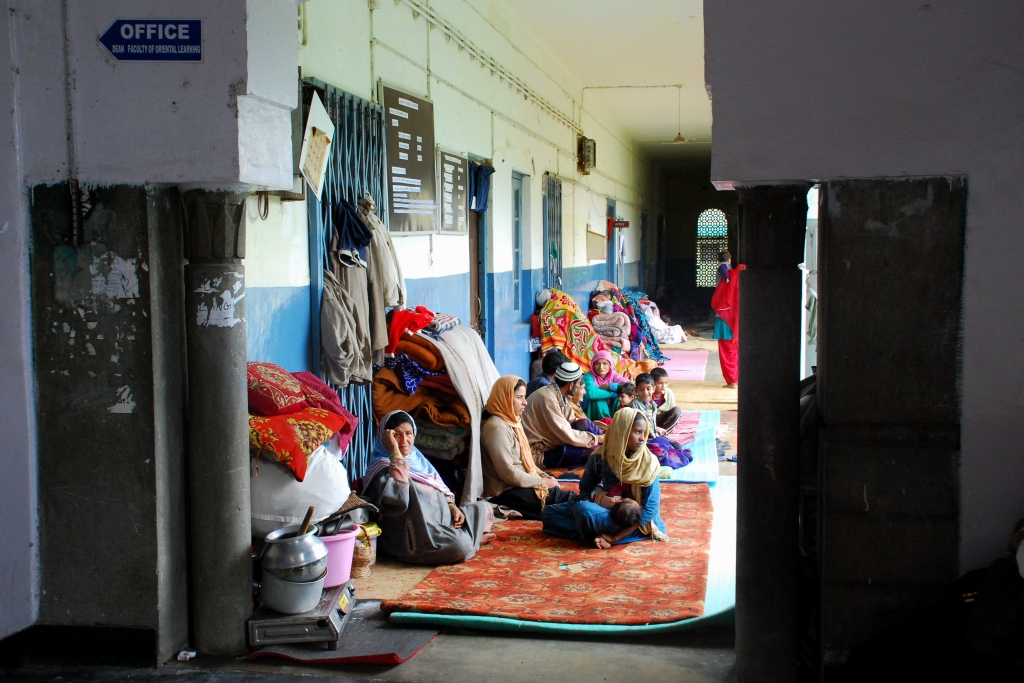
Relief camp set up at University of Kashmir. [FPK Photo/Aamir Nowshahri.]
Historical records also reveal that the areas left of the Jhelum once formed its flood basin.
Walter Lawrence, the famous British land revenue commissioner of Dogra times, has mentioned in his book “The Valley of Kashmir” that it is this flood basin that took the major brunt of the devastating floods of 1893 and formed a huge lake right up to the present Budgam district.
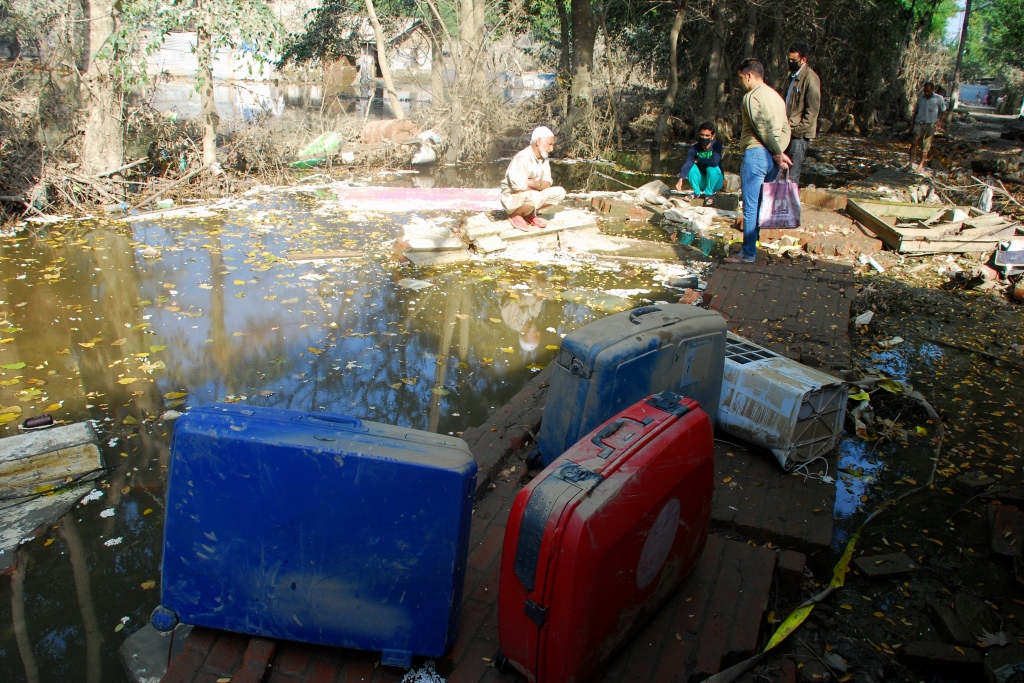
A scene at Shivpora Srinagar. [FPK Photo/Aamir Nowshahri.]
A lot has changed since then, and Lawrence’s flood basin does not exist anymore.
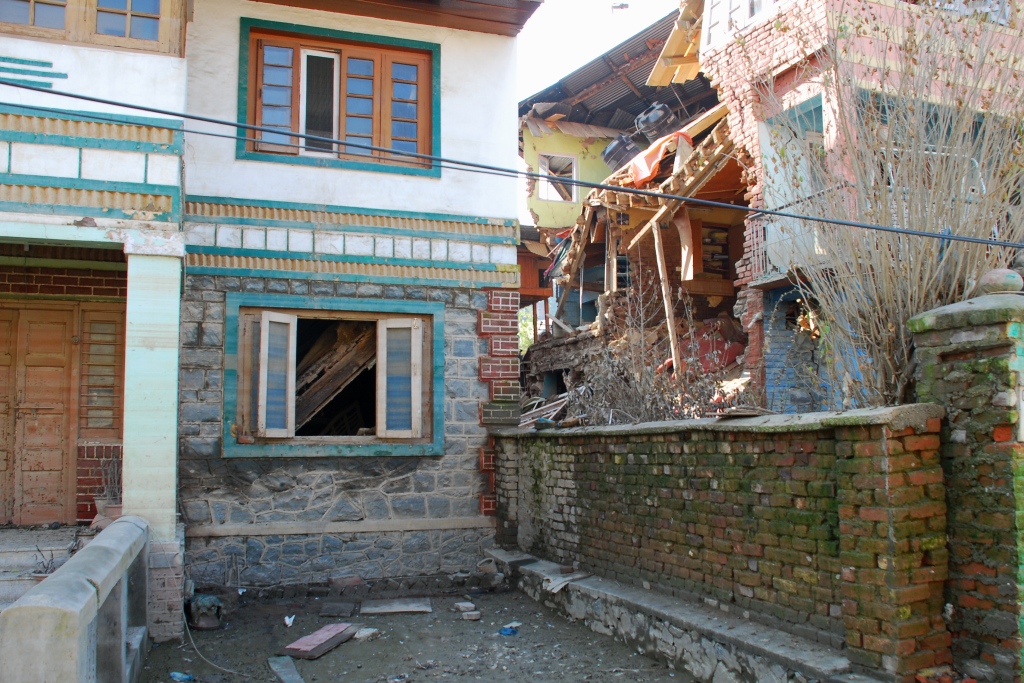
Damaged houses at Jawahar Nagar. [FPK Photo/Aamir Nowshahri.]
Coming back to the streets, people were recalling their personal experiences from the past.
The elders would talk about how during their own lifetimes, Kashmir would record even heavier rainfall than that witnessed in the first few days of September 2014 but still no floods would be witnessed.

Scene inside a shop at Abi Guzar. [FPK Photo/Aamir Nowshahri.]
People were of the firm belief that somewhere, the buck stopped with the people themselves.

Damaged houses at Gogji Bagh area of Srinagar. [FPK Photo/Aamir Nowshahri.]
Invoking a blend of spirituality and philosophy, citizens talked about how the balance of nature had been disturbed over the years.

Damaged building of a private school at Balgarden. [FPK Photo/Aamir Nowshahri.]
‘We’ve earned it for ourselves,’ I remember one aged man sitting at the cusp of flood waters saying.
He said it with a heavy heart while watching others being rescued by boat.

Men working on dismantling a damaged house at Jawahar Nagar. [FPK Photo/Aamir Nowshahri.]
Many were of the opinion that it was a disaster waiting to happen.

Message written on the gate of a damaged house at Balgarden, Srinagar. [FPK Photo/Aamir Nowshahri.]
It was only a matter of time before something as devastating as the flood of 2014 shook the people out of their deep slumber.
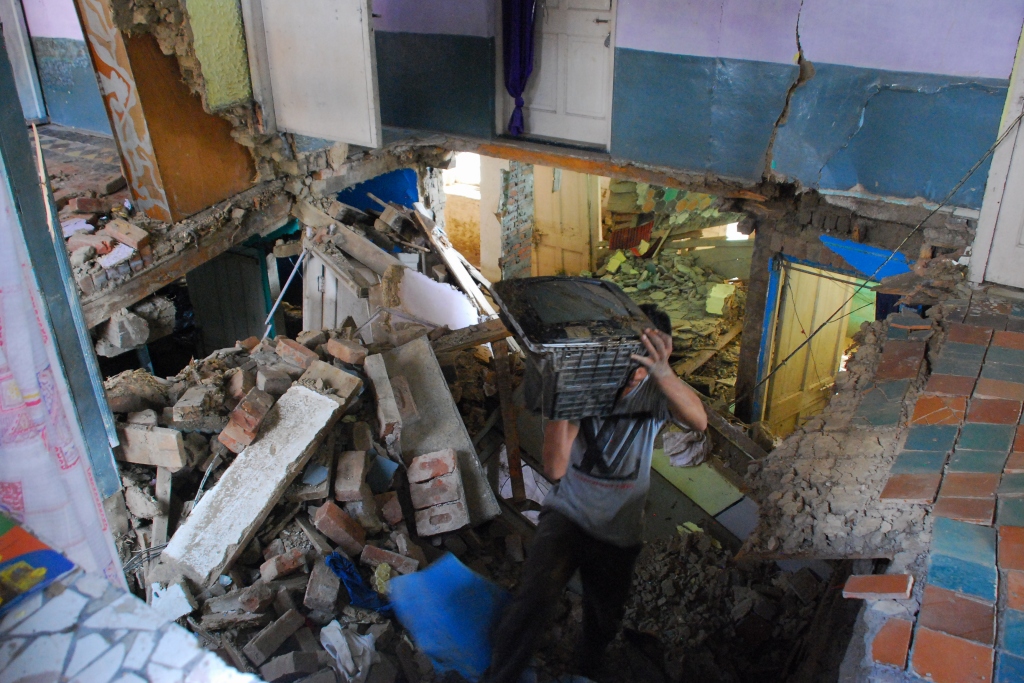
Scene inside a damaged house at Nawab Bazar. [FPK Photo/Aamir Nowshahri.]
The reason they gave was that nature would not take kindly to its boundaries being trespassed.
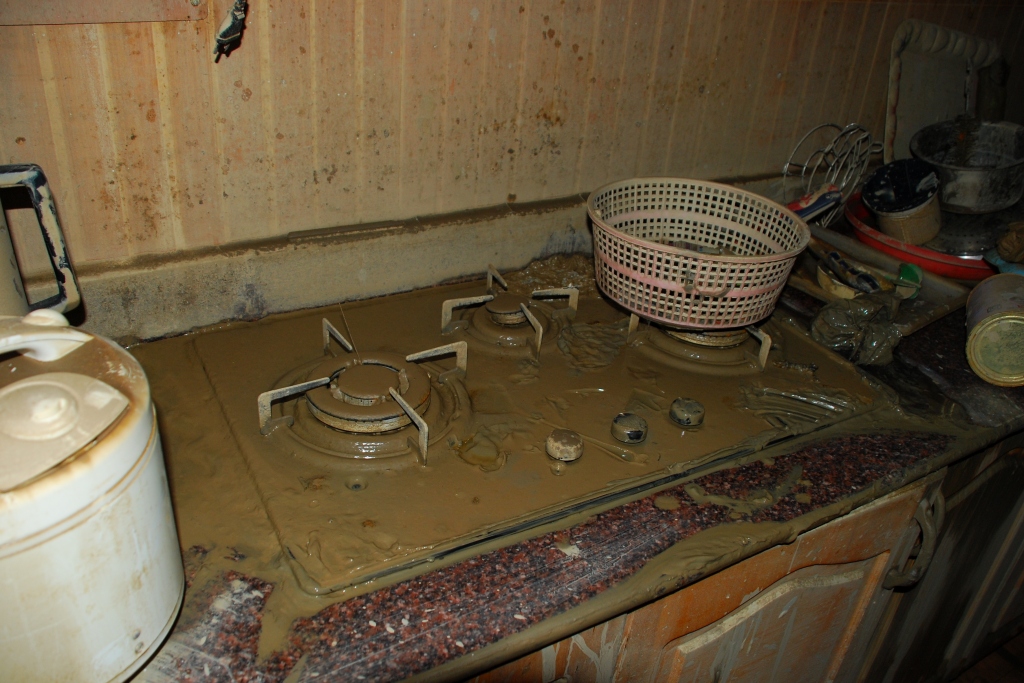
The kitchen of a house affected by flood at Shivpora. [FPK Photo/Aamir Nowshahri.]
One argument that often fell on my eardrums during my sojourns around town those days was that the angry waters of the Jhelum had actually done nothing wrong; they were only reclaiming lost course.
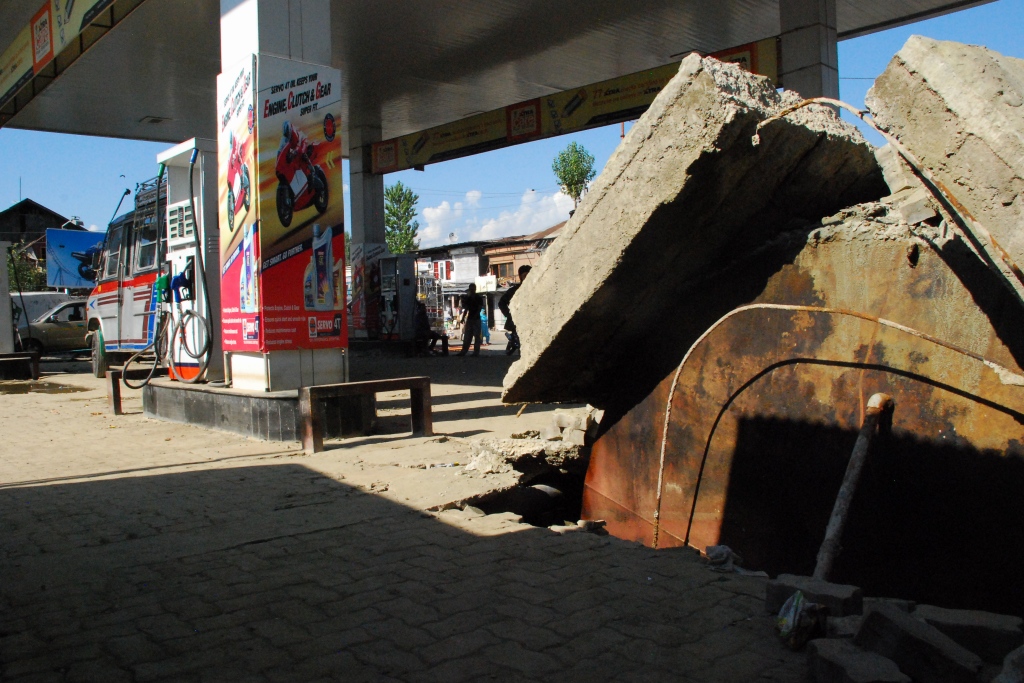
A displaced underground tank of a petrol pump at Qamarwari. [FPK Photo/Aamir Nowshahri.]
The logic given was also pretty simple: ‘If somebody occupies your house by force, would you not make an effort to drive him out?’
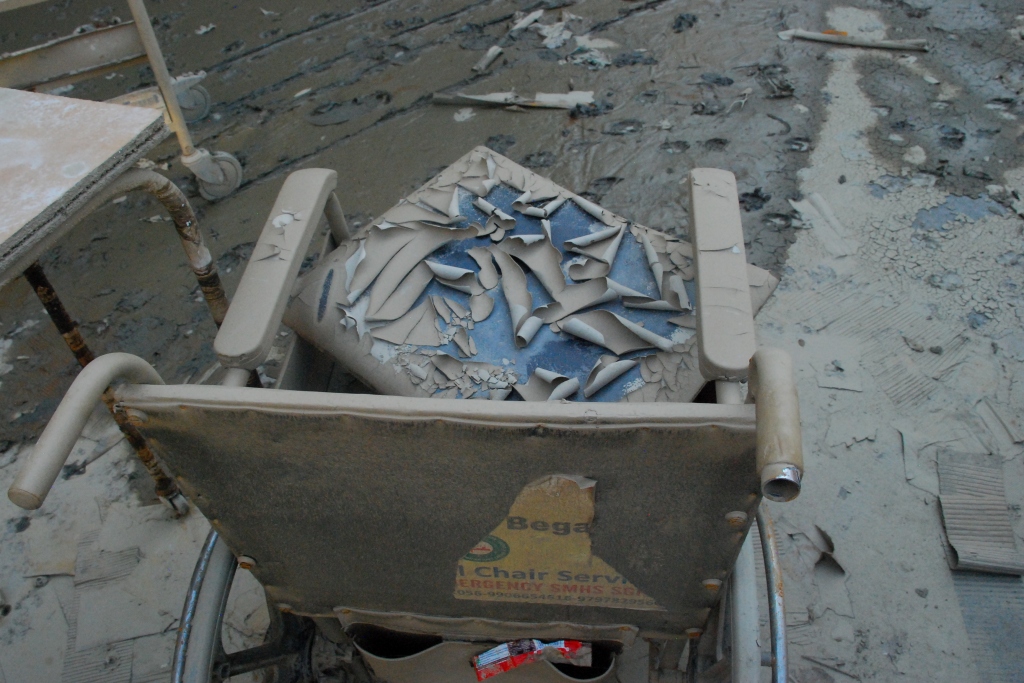
A wheel chair in the compound of SMHS Hospital. [FPK Photo/Aamir Nowshahri.]
I remember driving in the outskirts of the city one day with a friend when a man asked for a lift.
He had a couple of bags with him which apparently contained salvaged belongings.

Scene inside the classroom of a private school in Srinagar. [FPK Photo/Aamir Nowshahri.]
‘We used to live like kings,’ the man said with a sigh while narrating his experiences. My friend was quick to reply: ‘That is the mistake we made. We actually started believing we were kings.’
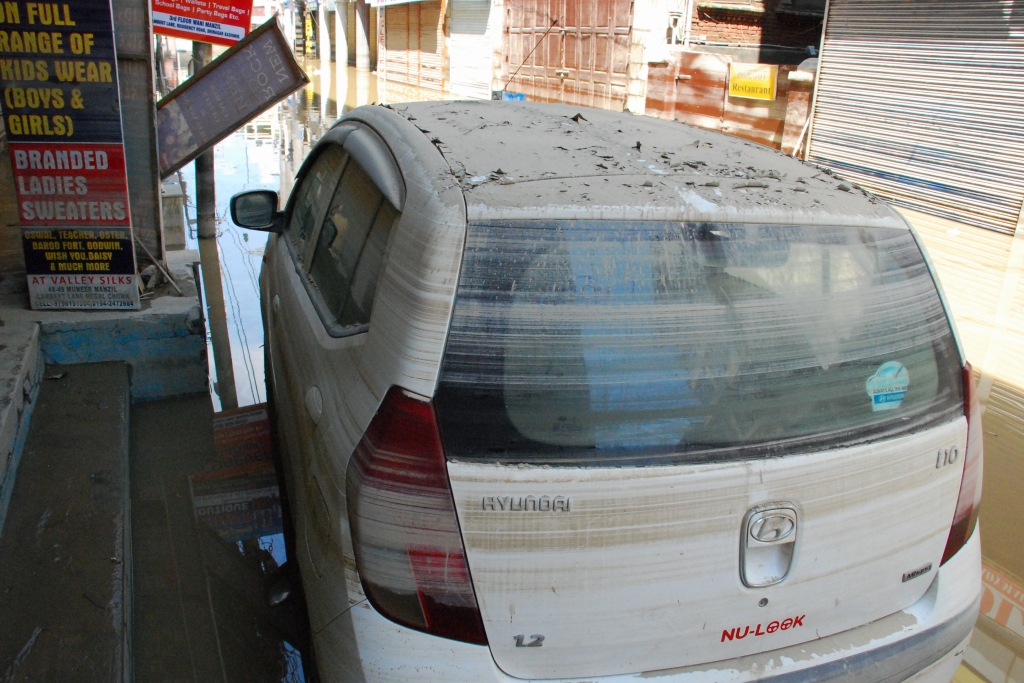
A car affected by the flood at Lambert Lane in the city centre. [FPK Photo/Aamir Nowshahri.]
A friend of mine who lives in Delhi called me about a month and a half after the flood.
He did not mince any words and told me quite bluntly that he was not surprised about what had happened.

Temporary shelters set up along the road at Tengpora. [FPK Photo/Aamir Nowshahri.]
‘We humans,’ my friend said, ‘are naive to think that nature will not retort if we mindlessly and repeatedly keep poking our noses into its affairs.’
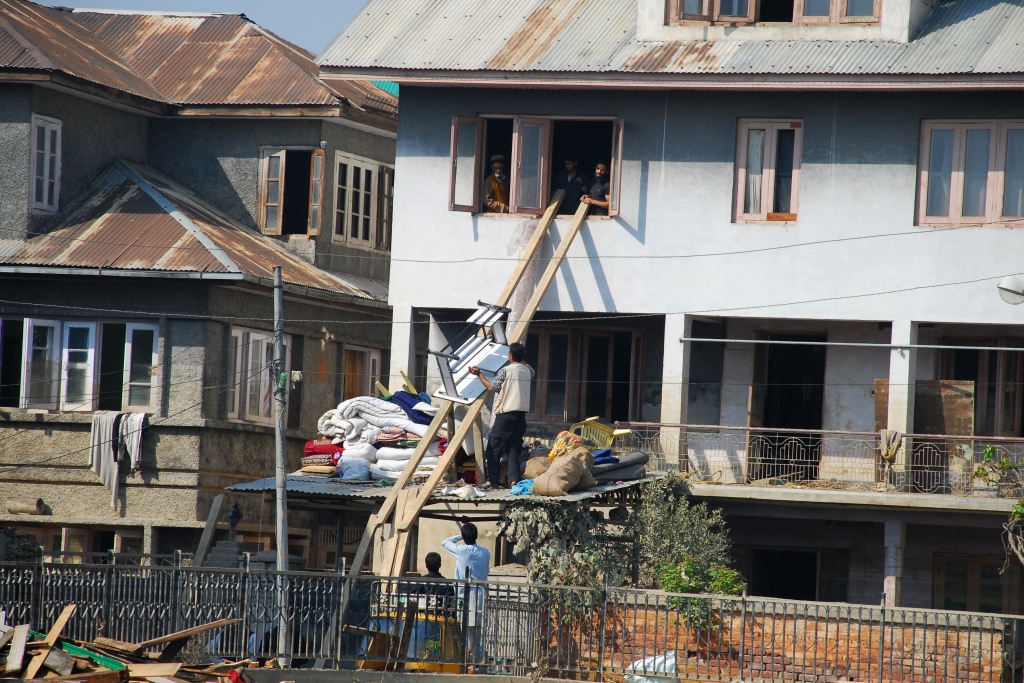
People removing belongings from a flood affected house at Jawahar Nagar. [FPK Photo/Aamir Nowshahri.]
What I have described above may seem like superficial statements, but they have deep meanings.

Scene inside a flood affected house at Nawab Bazar. [FPK Photo/Aamir Nowshahri.]
It is important that we understand the message and take corrective steps before history repeats itself again.



